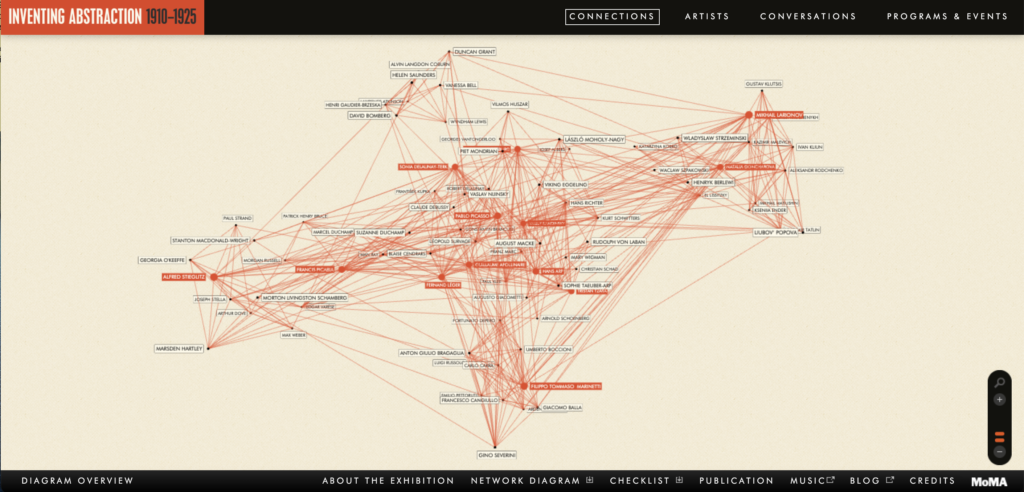Inventing Abstraction is an interactive network analysis DH project that traces the development of abstract art. Beginning in 1912, the first abstract pieces were presented to the public in Europe. This network includes a variety of abstract artistic media, including paintings, films, and music.
What are the nodes, and what are the edges?
In this project, the nodes represent pioneers of abstract art from 1910-1925. More specifically, the orange nodes represent artists who have over 24 connections mapped within the network, and the white nodes represent artists with fewer than 24 connections mapped within the network. The edges represent acquaintances between the artists during this time period; only edges with some form of documentation evidencing a relationship between two artists are mapped out. These edges allow viewers to examine similarities between various artists’ styles, how artists influenced each other, and how abstract artwork developed across countries and time.

What interactions does the project allow?
This is a 3D interactive project that allows users the ability to move within the network as well as zoom in and out. Users can click on any of the nodes, which give more information about the artist. A panel on the right-hand side of the screen shows what years the artist lived, their birthplace, places worked, interests, and a bibliography at the bottom. A selection of the artist’s works is also available, providing a digitalized museum. This feature allows easy access to people who would not have been able to view the artwork otherwise. The organization of the network offers a new way of synthesizing art that would be different than if one were to visit a physical museum. Viewers have the choice of either using the edges as a guide for exploring how art developed between artists who had some influence over each other, or they can use a more nonlinear approach of selecting artists randomly.

